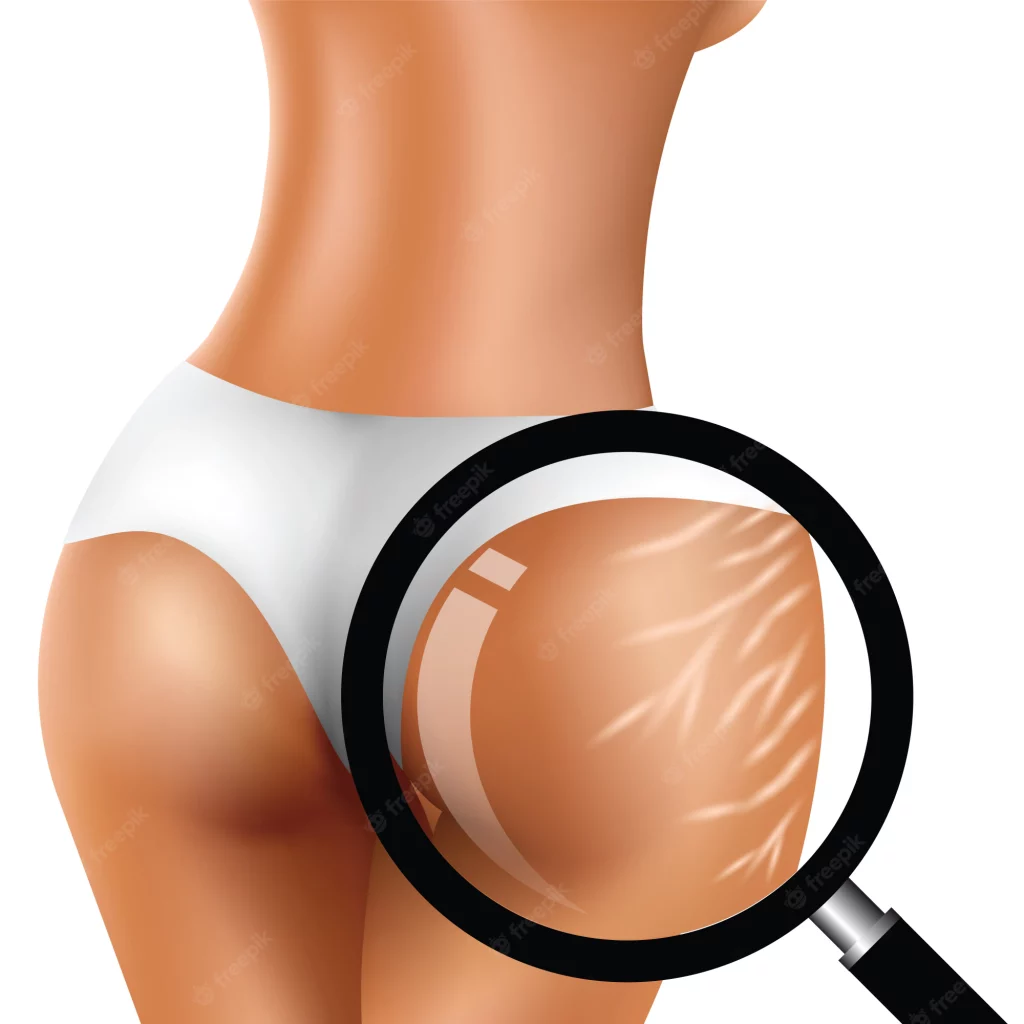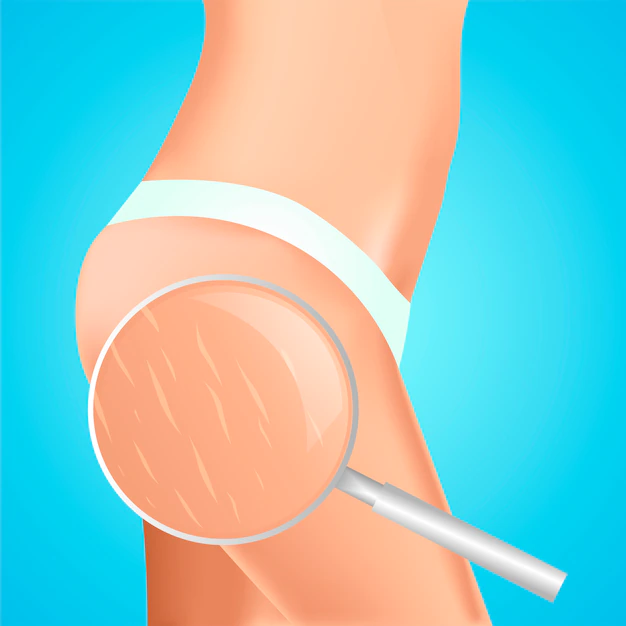
stretch marks are a common problem, especially during pregnancy. They can appear on the skin anywhere from the bellybutton up to the breasts, and they can be very frustrating to deal with. Fortunately, there are a few things you can do to help reduce their appearance, and in some cases even get rid of them completely.
Contents
- 1 What are stretch marks?
- 2 How do stretch marks form?
- 3 How do you get rid of stretch marks?
- 4 What are the risks of getting stretch marks?
- 5 How can stretch marks be prevented?
- 6 What are stretch marks?
- 7 How do they form?
- 8 Types of stretch marks
- 9 How to get rid of stretch marks
- 10 Prevention tips for getting rid of stretch marks
- 11 Conclusion
What are stretch marks?
Stretch marks are a type of scar that form from repeated stretching and tearing of the skin. They are most common on the body around the breasts, abdomen, hips, and thighs.
Stretch marks can vary in color and shape, but they all share one common feature: they are raised, lumpy, and unevenly spaced.
Stretch marks can develop at any age, but they are most common during puberty or early adulthood. They are not always visible, but they may become more noticeable as the person begins to wear tighter clothing or when they gain weight.
There is no known cure for stretch marks, but there are some treatments that may help lessen their appearance. Many people also find that topical creams or lotions help to relieve the symptoms of stretch marks.
How do stretch marks form?
Stretch marks are markings on the skin that are caused by shearing or tearing of the dermis. They typically form on the abdomen, chest, back, and thighs during pregnancy, weightlifting, and vigorous exercise. They can also form after childbirth or during weight loss or rapid weight gain.
Stretch marks are generally harmless but can be unsightly and can sometimes fade with time. If you experience stretch marks, there are a few things you can do to minimize their appearance:
– Avoid strenuous activity that causes shearing or tearing of the dermis.
– Apply light topical treatments to help ease the look of stretch marks. These treatments include creams, lotions, and gels that contain alpha hydroxy acids (AHAs), which can break down the collagen in the skin. AHAs are also effective at fading stretch marks over time.
– Treat any underlying skin conditions that may be contributing to stretch mark formation. These conditions may include sunburns, dryness, eczema, or psoriasis.
How do you get rid of stretch marks?
Stretch marks are sometimes caused by physical activity, pregnancy, childbirth, or weight gain. However, they can also be the result of skin trauma or surgery. Fortunately, there are a few ways to get rid of stretch marks.
There are a few home remedies that have been known to work. One is to mix two tablespoons of apple cider vinegar with one cup of water and apply the mixture to the stretch marks several times a day. You can also use a over-the-counter ointment called Aloe Vera Gel or Vaseline to treat stretch marks. If the stretch mark is on an area that gets a lot of sunlight, you can use a cream called Melanoacetic Acid (3% solution) which is available at most health food stores. However, these treatments should only be used as a last resort because they may be harsh and could cause further skin damage.
If you’re considering surgical removal of your stretch marks, there are several options available to you. The most popular procedure is called laser resurfacing which uses intense light to smooth out the texture of the skin. This procedure can be done in a doctor’s office or at a spa. Another option is dermabrasion which uses
What are the risks of getting stretch marks?
Stretch marks are a type of skin discoloration that can occur when skin is stretched or pulled excessively. The most common causes of stretch marks are pregnancy and childbirth, weightlifting and athletics, breastfeeding, and piercings.
Stretch marks can also form from scars caused by surgery or burns.
The severity of stretch marks will depend on the intensity and duration of the stretching process. In general, however, stretch marks are generally harmless but may fade over time.
If you’re concerned about your stretch marks, consult a dermatologist or other health professional. There are various treatments available, including lasers and creams.
How can stretch marks be prevented?
If you’re looking for ways to prevent stretch marks, there are a few things you can do. First, make sure you’re getting enough hydration. This will help keep your skin elastic and healthy. Second, avoid rubbing or scratching the skin. This can cause damage and lead to stretch marks. Finally, use sun protection if you’re going to be spending a lot of time in the sun.
What are stretch marks?
Stretch marks are markings on the skin caused by sudden stretching or thinning of the skin. Most stretch marks occur on the torso, buttocks, and thighs, but they can also appear on the arms, legs, and breasts. Stretch marks are generally light brown in color and often resemble small scars. They can fade over time but may never completely disappear.
Stretch marks may occur during pregnancy, childbirth, weight gain or loss, puberty, abuse, accidents, or medical procedures such as biopsies or surgery.
How do they form?
Stretch marks can form at any time during your pregnancy, and can be visible on the skin anywhere on your body. They are caused by the stretching and tearing of the skin as it expands and contracts with the growth of your baby.
How do you treat stretch marks?
There is no one-size-fits-all answer to this question, as the best treatment for each individual will depend on the severity of their stretch marks, as well as their personal preferences and lifestyle choices. However, some common treatments for stretch marks include topical creams or lotions, injections (such as Botox or fillers), laser treatments, and surgery. It is important to speak with a doctor about what is best for you before starting any treatment, as each option has its own set of risks and benefits.
Types of stretch marks
Stretch marks are markings that occur on the skin when it is stretched beyond its natural limit. There are three types of stretch marks: pigmentary, striae, and hypertrophic. Pigmentary stretch marks are the most common and are composed of dark brown or black spots that can vary in size and number. Striae stretch marks are linear patterns that may be light or dark in color and can be more numerous than pigmentary stretch marks. Hypertrophic stretch marks are the most severe type and are characterized by thick, raised lines that may be red, purple, or brown in color.
How to get rid of stretch marks
Stretch marks can be a frustrating and unsightly problem. Fortunately, there are many ways to get rid of them. Here are five tips to help:
1. Avoid stretching the mark directly. This will only make it worse. Instead, use massage or heat to soften the underlying skin and encourage the skin to heal itself.
2. Apply light topical treatments such as glycolic acid or retinoids daily for two to four weeks. These medications can help remove the top layer of skin and reduce the size of the stretch mark.
3. Use over-the-counter cream containing benzoyl peroxide or salicylic acid. These creams work by breaking down the skin pigment that is responsible for making stretch marks look darker and more noticeable.
4. Use laser therapy to reduce the size and color of stretch marks in a controlled manner. This type of treatment is not recommended for pregnant women or people with sensitive skin, as it can cause scarring.
5. Consider surgery if other treatments don’t work well or if stretch marks are severe or bothersome. Surgery may be necessary to remove the entire lesion, or only a portion of it may need to be
Prevention tips for getting rid of stretch marks
Stretch marks are a common problem that many people suffer from. Unfortunately, there is no surefire way to prevent them from appearing. However, there are some things that you can do to help improve your chances of avoiding them.
One of the best ways to avoid stretch marks is to be aware of the signs that you are developing them. If you notice that your skin is becoming more elastic than usual, or if it becomes red and irritated easily, then you may be at risk for developing stretch marks. Additionally, it is important to keep your skin moisturized and free from sun exposure. Not only will this help to reduce the likelihood of developing stretch marks, but it will also help to improve your skin’s overall appearance.
If you do develop stretch marks, there are a few things that you can do to help improve their appearance. One popular technique is called “stretch mark lightening”. This involves using a light machine called a laser treatment device to break down the pigmentation that is responsible for the yellow and brown tones that often appear in stretch marks. In some cases, laser treatments may be able to completely remove the pigmentation from the skin and leave behind only smooth,
Conclusion
Stretch marks are a common occurrence, and they can vary in severity. Some people experience them on just a few areas of their body, while others find them all over. The best way to treat stretch marks is to consult with a dermatologist who can prescribe the appropriate treatment. In the meantime, here are some tips to help you deal with stretch marks:
-Avoid rubbing or scratching the mark; this will only make it worse
-Apply hydrocortisone cream or ointment as directed by your doctor
-Stay dry and clothed around the affected area; sweat will cause moisture to accumulate and lead to further damage

